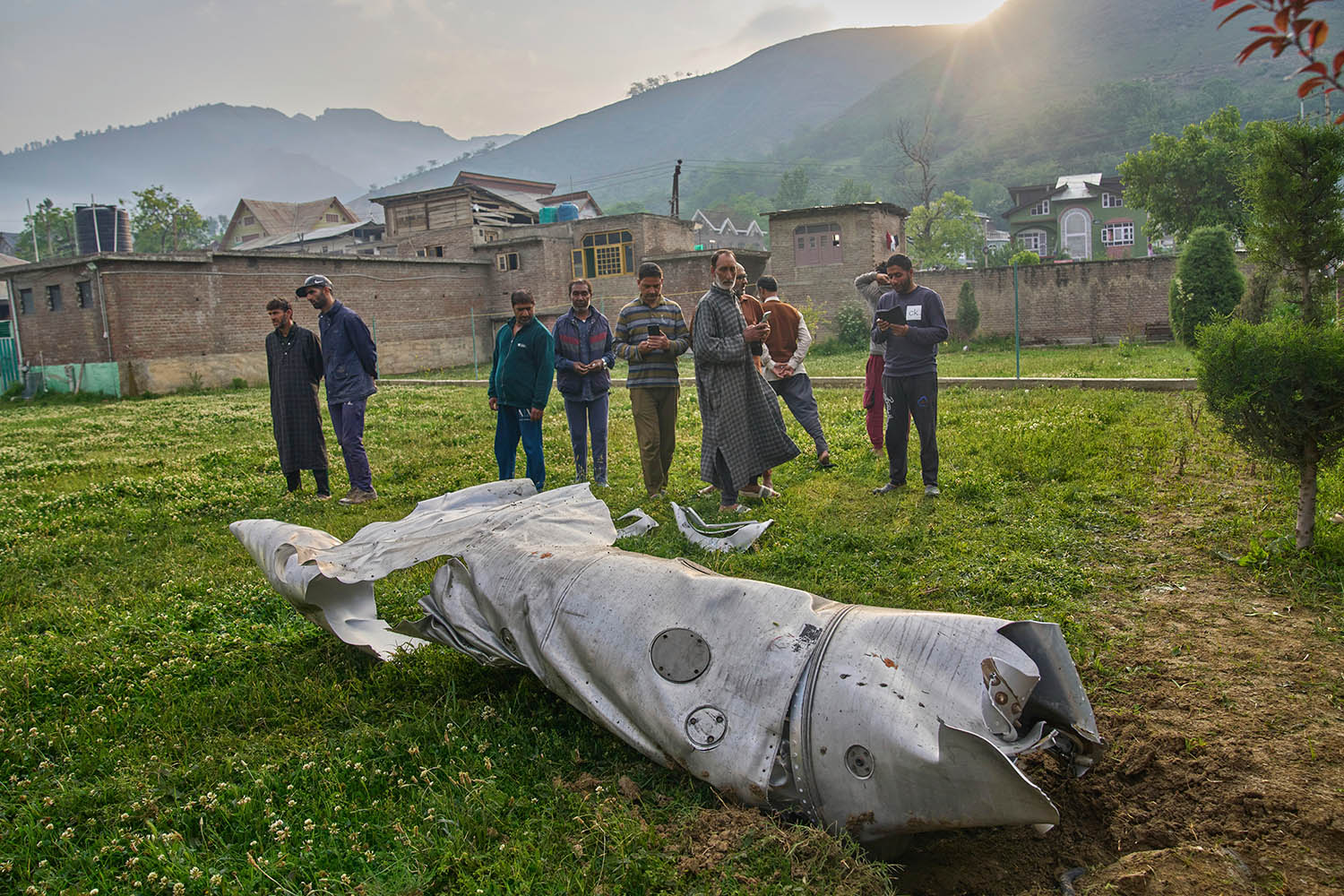Welcome to the Sensemaker, our daily newsletter. It features calm and clear analysis on the stories driving the news across tech, politics, finance, culture and more. The Sensemaker will appear here every morning, but to receive it in your email inbox, sign up on our newsletters page.
Pakistan said it would “avenge each drop of blood” after Indian airstrikes killed 31 people following a terrorist attack in the disputed Kashmir region.
So what? Two nuclear-armed neighbours are on the brink of war. These days, conflicts between major powers are rare. Most confrontations pit large countries against smaller ones, such as Ukraine, or against militant groups, such as Hamas. India and Pakistan are different.
Spiralling. In addition to trading physical blows, both countries are fighting an information battle in the wake of India’s strike in the early hours of Wednesday.
•
India said it hit nine sites housing “terrorist infrastructure”, which its foreign secretary described as a “non-escalatory, proportionate” move to defend against future attacks.
•
Pakistan called them a “blatant act of war” and claimed it had shot down five Indian jets and a drone, something Delhi has yet to confirm.
Pakistan also retaliated by firing artillery over the Line of Control separating it from India.
Collateral damage. India said it targeted terrorist training camps and weapons caches, but Pakistan’s information minister insisted “there are no terrorist hideouts there” and that it was a “peaceful area”. According to Islamabad, India’s strikes killed 31 civilians, injured 57 more and damaged two mosques.
Killing spree. The terror attack by Islamist gunmen at a holiday camp in the scenic but restive Himalayan region on 22 April was the deadliest on civilians in more than two decades, killing 25 tourists and one guide. According to survivors, the gunmen sought out Hindu men.
Blame game. India’s Hindu-nationalist prime minister, Narendra Modi, has faced mounting pressure to respond. His government accuses Pakistan of supporting the two militant groups it believes were responsible, which Pakistan firmly denies. Before Wednesday’s strikes, India had:
•
cancelled visas for Pakistani nationals;
•
expelled the country’s diplomats;
•
closed its airspace to Pakistani commercial carriers;
•
launched a crackdown on Muslims in its part of Kashmir; and
•
suspended a landmark water-sharing deal.
A little history. The dispute over Muslim-majority Kashmir dates back to Britain’s partition of India in 1947. The territory was free to choose to join either Pakistan or India. When one local ruler opted to join India, war broke out. Two more conflicts followed in 1965 and 1999. Both countries see the mountainous region, with its abundant rivers, as strategically important. Today
•
India controls about 55 per cent of Kashmir;
•
Pakistan presides over roughly 30 per cent; and
•
China takes charge of the rest.
Pakistan-administered Kashmir and Indian-administered Kashmir are separated by a 1971 ceasefire line, or Line of Control, which acts as the de facto border.
Uprising. Since 1989 there has been an armed revolt in Indian-controlled Kashmir, which has killed tens of thousands of people. India has long accused Pakistan of fuelling this insurgency.
Trading blows. Before signing another ceasefire in 2003, India regularly traded fire across the Line of Control. Indian-controlled Kashmir has also suffered numerous terror attacks over the past three decades. Although these have become rarer since India beefed up security, two militant attacks triggered Indian strikes on Pakistan in 2016 and 2019.
Targeted. What India did this week was more extensive. But it still appears to follow India’s so-called ‘Cold Start’ doctrine of launching calculated attacks on Pakistani territory that are not big enough to justify a full-blown nuclear response.
What’s more… there is still a chance of miscalculation. Another sudden conflagration could easily break out into a hot war. The US, China and the United Nations are urging restraint.
Photograph by Dar Yasin / AP

